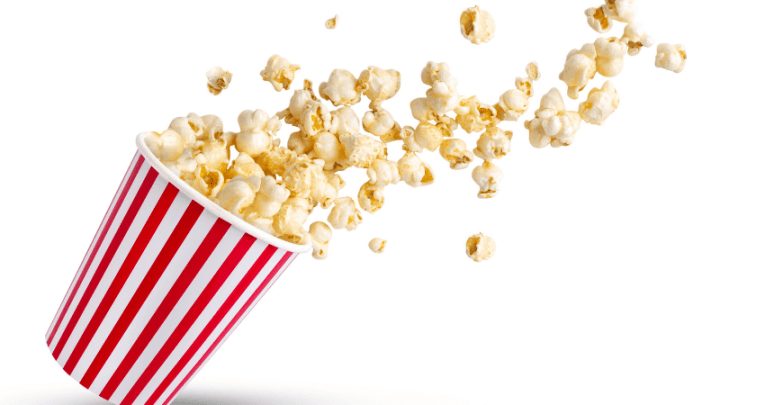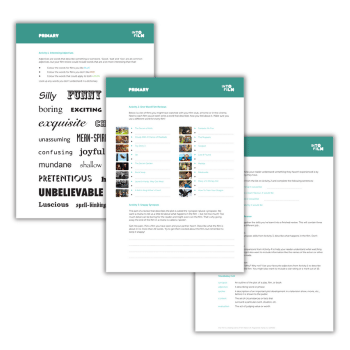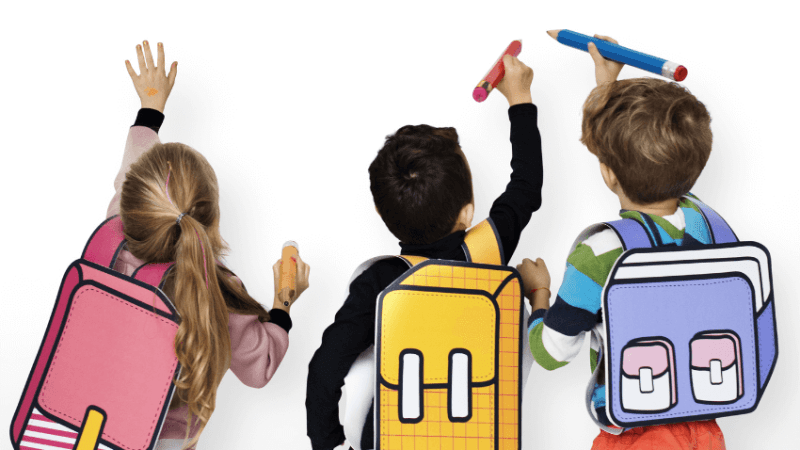KS2 writing – how to introduce multimedia

For today’s children, composition should be about more than pen and paper. So break out your storyboard, pop some corn, and turn your pupils into producers…

- by James Clements
- Writer, researcher and independent English adviser Visit website

In the modern world, writing is no longer confined to words on a page.
Many of the texts that pupils read and write now exist on a screen; they are interactive with a very different structure to that of a traditional book.
Learning to write texts like these and using them to develop their skill and motivation as writers can be an integral part of children’s writing experience at school.
So, how can we include multimedia in our lessons?
Let’s look at two case studies that show how different teachers have made use of technology to motivate pupils to create modern texts, all the time supporting the development of children’s traditional writing skills.
Writing for the web
As part of a unit of history work on the Victorian Era, one Year 6 class researched and then wrote biographies of historical figures from this period. These were then word-processed and published in a class book.
The teacher decided that the biographies would provide a good opportunity to explore the idea of tailoring writing for different purposes.
First, the teacher showed the class some pages from the DK Find Out website, covering a range of different topics.
They then asked pupils to work in pairs to make notes about how the information was displayed, concentrating on:
- Page layout
- Length of paragraphs and sentences
- Vocabulary
- Use of images
- Use of links to further information
The children noted that the pages tended to be dominated by images, with short blocks of text, each introducing a key idea.
Links to further information or boxes that expanded to provide more detail were common.
Each page usually had a short introduction, but then information could be accessed in any order, with readers free to follow the strands that interested them.
Once they were familiar with these features, the children used a laptop to return to the text of their biography.
Editing and formatting
They edited their work, breaking it into smaller paragraphs of only a few sentences and finding images to illustrate each.
They ensured that key vocabulary was picked out in bold and that each paragraph made sense when read alone and wasn’t dependent on other text being read first.
Because they already had the text to work from, and they were concerned with simplifying, rather than adding, the children enjoyed this task immensely.
Then pupils worked with a partner using Weebly to copy and paste their text into a webpage, adding in images and interactive features such as links and expanding text boxes.
These pages were added together to make one class website, and a small group of children added links between the pages. They then published this online.
Finally, the children were asked to compare the original biography they had written and the text of their new webpage, comparing the language and structure.
The teacher reiterated the point that one style of writing isn’t better than the other; the language choices we make need to reflect the purpose and format of our writing, as well as our audience.
Filmmaking
A small village school with three classes decided to run a ‘Film Fortnight’ where children would work in groups to create a short film based on the school’s termly curriculum theme: ‘Animals and Conservation’.
On the final Friday, children, staff and parents would gather in the hall for a viewing of the completed films (with popcorn, of course).
Acorn Class (Reception and Year 1) decided to make a documentary, with each child talking to the camera about a different endangered animal.
Trending
The teacher helped the children to choose an animal and rehearse what they were going to say, prompting them to explain why they had chosen the animal and why it was important to try and save it.
In a shared writing session, the class wrote an introduction, explaining why some animals were in danger of extinction, and a closing section where they explained what people could do to help.
Next, the teacher filmed each of the children in turn (with different pupils acting as ‘assistant directors’ and pressing start and stop on the tablet).
Children also drew and annotated pictures of their chosen animals and these were edited into the finished film, too.
Stop-motion
Oak Class (Year 2 and Year 3) chose to make stop-motion animations.
Working in small groups, they devised a story involving animals and then used a storyboard template to map out the action, focusing on how this kind of writing differed from a traditional story (shorter sections, key moments, etc).
Then they wrote a script for a narrator, which again introduced a new medium – such as how speech differs from written work (is it less formal? Is the length of each section different? Etc).
This writing followed a process, with the chance to plan, draft, evaluate and then edit and redraft.
They then used model animals (borrowed from Acorn Class) to film. They created backdrops and then used the app Stop Motion Studio on tablets to create their films.
Forest Class (Years 4, 5 and 6) chose to create improvised narrative films about animals using iMovie.
Working in small groups, they planned their story and thought carefully about the roles they would each play, the shots they needed to film and other aspects such as costumes, sound effects and editing.
Over two afternoons, the children filmed their scenes (the second day being for re-filming after they had watched their footage back and realised some parts weren’t quite right).
The children then worked (with an adult ‘assistant’ on hand) to edit their footage into a narrative, choosing shots and talking about the implications of different ways if combining their footage.
This led to lots of interesting conversations about how the editing stage could make changes to the meaning of the story, something the teacher was keen to draw upon when children were writing in a more traditional way.
On film night, the children entered the hall via a red carpet and enjoyed sharing their films with parents and carers.
The final products were shared on the school’s website too, so children could go back and watch them again – which they did. Many times.
Visual, multimedia texts play an important part in children’s lives, so they can and should play an important part in a classroom.
If we want to help children become confident, enthusiastic, skilful writers, then technology is a powerful tool we can harness to help.
Three types of text
- Visual – texts where an image plays a significant role in conveying meaning. This might be a still picture – a painting or photograph; a moving image on film; a picturebook; poster; or a cartoon.
- Multimedia – texts where meaning is conveyed through audio, film and animation as well as texts and images. Websites that contain links between different items or pages might also be considered multimedia.
- Multimodal – texts that combine more than one system of making meaning, featuring a mix of words, images, film, and audio, as well as design features (and even gestures in a presentation, film or drama). Picturebooks, posters, websites, films and graphic novels can all be multimodal.
Don’t worry, as so often with the relationship between academic theory and classroom practice, using the correct terminology matters a lot less than making use of the feature in the classroom!
James Clements is an education researcher and writer. This article is adapted from On the Write Track: A Practical Guide to Teaching Writing in Primary Schools by James Clements, published by Routledge in October 2022. Follow James on Twitter @MrJClements










